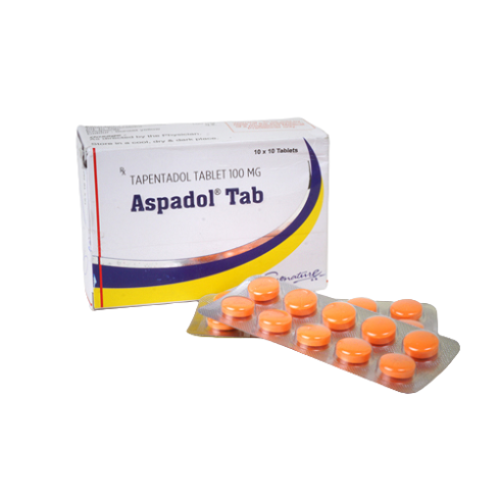Period Pain Relief: What to Do When Nothing Works|| Aspadol 100mg
What Is Period Pain?
Period pain, medically known as dysmenorrhea, refers to cramping pain in the lower abdomen before or during menstruation. It can range from mild discomfort to intense pain that interferes with daily activities. While occasional cramping is normal, severe or persistent pain may indicate an underlying issue.
Signs of Period Pain
Period pain isn’t just about cramps. You may also notice:
- Dull or throbbing ache in the lower abdomen
- Pain that radiates to the lower back or thighs
- Nausea or vomiting
- Fatigue or dizziness
- Headaches
Symptoms of Period Pain
Symptoms often vary depending on the individual but generally include:
- Intense lower abdominal cramps
- Pelvic pressure
- Bowel irregularities (diarrhea or constipation)
- Bloating and mood swings
Some women may also experience lower back pain and sweating due to hormonal changes.
Causes of Period Pain
Primary dysmenorrhea is caused by increased production of prostaglandins, which trigger uterine contractions. Secondary dysmenorrhea is usually due to underlying conditions such as:
- Endometriosis
- Fibroids
- Pelvic inflammatory disease (PID)
- Adenomyosis
Stress, poor diet, and lack of physical activity can make the pain worse.
Diagnosis of Period Pain
To diagnose chronic or severe period pain, a doctor may recommend:
- Pelvic examination
- Ultrasound
- MRI (in some cases)
- Laparoscopy (for suspected endometriosis)
Always seek professional advice if the pain is unbearable or disrupts your daily routine.
Interaction with Other Medications
Before taking painkillers or any treatment for period pain, be cautious of drug interactions. Some medications (like blood thinners, antidepressants, or anti-inflammatory drugs) can interact with Tapentadol 100mg or other strong pain relievers. Always inform your doctor about any medications or supplements you’re taking.
How to Treat Period Pain
When natural remedies fail, it may be time to consider stronger treatment options. Here’s how to manage severe menstrual pain:
1. Heat Therapy
A heating pad or warm bath can increase blood flow and relax the muscles.
2. Exercise
Light physical activity, like walking or yoga, can reduce pain by releasing endorphins.
3. Dietary Changes
Reduce intake of caffeine, sugar, and salt. Add anti-inflammatory foods like ginger, turmeric, and omega-3s.
4. Over-the-Counter (OTC) Medications
Ibuprofen, naproxen, or acetaminophen can offer temporary relief.
5. Prescription Pain Relievers
When OTC meds aren’t enough, doctors may prescribe Tapentadol 100mg — available under the brand name Aspadol 100mg.
Introduction to Aspadol 100mg
Aspadol 100mg is a prescription pain reliever that contains Tapentadol 100mg, a centrally acting opioid analgesic. It is commonly used to treat moderate to severe acute pain, including chronic period pain when other medications fail to provide relief.
Aspadol 100mg Uses
- Severe menstrual cramps (when conventional painkillers are ineffective)
- Musculoskeletal pain
- Post-surgical pain
- Lower back pain
- Neuropathic pain
It works by altering how your body perceives pain, acting on the central nervous system.
Benefits of Aspadol 100mg
- Provides fast and long-lasting pain relief
- Reduces inflammation and cramping
- Useful in moderate to severe period pain
- Works better than conventional NSAIDs in some cases
- Has a dual mode of action: opioid receptor agonist + norepinephrine reuptake inhibitor
Precautions Before Using Aspadol 100mg
- Do not use if allergic to Tapentadol or other opioids
- Avoid alcohol while taking this medication
- Not suitable for people with respiratory disorders, liver or kidney issues
- Do not drive or operate heavy machinery under its influence
- Pregnant or breastfeeding women should consult a doctor
Always use under strict medical supervision to avoid dependency or withdrawal symptoms.
Treatment Options for Severe Period Pain
If lifestyle changes and OTC medications don’t work, your doctor may suggest:
- Hormonal birth control pills (to regulate or stop ovulation)
- Intrauterine devices (IUDs)
- Hormone therapy
- Strong prescription painkillers like Aspadol 100mg
- Surgery (in extreme cases of endometriosis or fibroids)
Frequently Asked Questions (FAQs)
1. Is Aspadol 100mg safe for period pain?
Yes, Aspadol 100mg can be prescribed for severe menstrual pain, especially when conventional painkillers don’t work. However, it should only be taken under medical supervision.
2. Can I take Aspadol 100mg every month for cramps?
It is not recommended for long-term use due to the risk of dependence. Use only when absolutely necessary and as directed by your doctor.
3. How fast does Tapentadol 100mg work?
It usually starts working within 30–60 minutes of ingestion, offering relief for up to 6–8 hours.
4. What are the side effects of Aspadol 100mg?
Common side effects include dizziness, nausea, drowsiness, constipation, and dry mouth. Report any unusual symptoms to your doctor.
5. Can I take Aspadol 100mg with ibuprofen or paracetamol?
Avoid combining without medical advice. It may increase the risk of side effects or drug interactions.
6. Is Aspadol 100mg addictive?
It has a risk of dependency if misused. Follow your doctor’s dosage instructions carefully.
Conclusion
Period pain can be physically and emotionally draining, especially when nothing seems to help. While lifestyle changes and OTC remedies are effective for some, others may require stronger treatment options like Aspadol 100mg. With its Tapentadol 100mg formulation, Aspadol provides fast and effective pain relief for those struggling with severe menstrual cramps. Always consult a healthcare provider before starting any new medication.














Post Comment